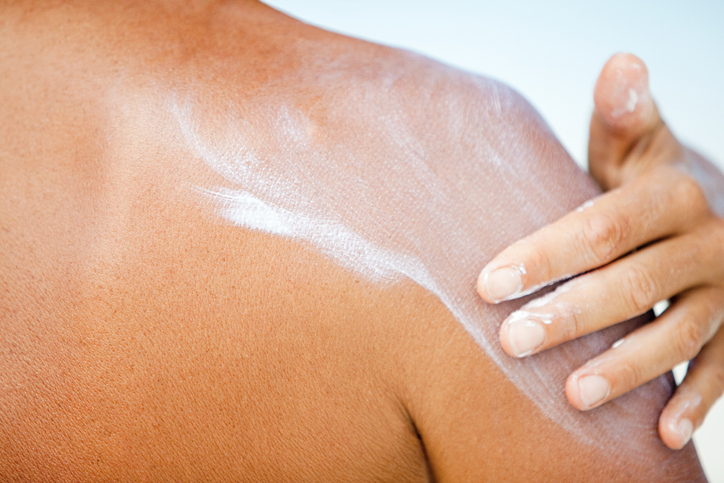Sunscreen is part of a complete sun protection strategy to safeguard your skin from damage from UV radiation. But how much sunscreen do you need, and how often should you apply? Our expert provides some helpful guidance.
Q: Why is applying sunscreen important?
Blair Murphy-Rose, MD: Skin cancer remains the most common cancer globally, but the encouraging news is that it’s largely preventable. Clinical research has demonstrated that consistent, daily use of sunscreen as directed can significantly lower the risk of developing both melanoma and nonmelanoma skin cancers.
In addition to cancer prevention, sunscreen plays a critical role in protecting against photoaging — including fine lines, wrinkles, laxity and hyperpigmentation. I recommend applying a broad-spectrum sunscreen with an SPF of at least 30 every morning to all exposed skin, regardless of season or weather conditions.
For prolonged outdoor exposure, such as a day at the beach or by the pool, opt for a higher SPF. The Skin Cancer Foundation recommends a minimum SPF 50 for extended outdoor use. If you’ll be swimming or perspiring, choose a sunscreen labeled as “water resistant,” which is tested to remain effective for either 40 or 80 minutes in water, depending on the designation.
Q: How much sunscreen should I use?
Blair Murphy-Rose, MD: The Skin Cancer Foundation advises using approximately a nickel-sized amount for the face and at least two tablespoons — roughly the size of a shot glass — for the entire body. Keep in mind that body size and surface area vary, so some individuals may require more.
Think of applying sunscreen like painting a fence: use enough product to ensure even and thorough coverage before rubbing it in.
Importantly, research shows that most people apply only 25 to 50 percent of the recommended amount, which means they’re not getting the full SPF protection listed on the label. Don’t forget commonly missed areas like the scalp, hairlines, ears, eyelids, lips, feet and the backs of hands.
Q: Do I really have to reapply?
Blair Murphy-Rose, MD: Absolutely. Reapplication is essential, regardless of the SPF or the type of UV filters in the product. Over time, sunscreen can degrade, wear off or be removed by water, sweat or towel drying. To maintain full protection, reapply every two hours — and immediately after swimming or heavy sweating.
In fact, one study showed that users often apply more thoroughly and cover missed areas during their second application, reinforcing the value of reapplication.
Q: Can I use a stick or spray sunscreen? What about powder?
Blair Murphy-Rose, MD: The best sunscreen is the one you’ll actually use — and use correctly. Sunscreens come in many forms, including lotions, creams, gels, sprays, sticks and powders. Each formulation has its advantages, and different formats may suit different skin types, preferences or situations.
Stick sunscreens are a convenient option, especially for young children and on-the-go reapplication. I recommend overlapping each stroke slightly to avoid missing spots and to ensure uniform coverage.
Spray sunscreens are popular for their ease, but they require careful application to be effective. Spray generously until an even sheen appears, then rub it in thoroughly. Avoid spraying directly onto the face; instead, mist into your hands first and apply manually. Always apply sprays in a well-ventilated area and avoid inhalation.
Powder sunscreens can be useful for layering over makeup and for convenient touch-ups throughout the day. While they shouldn’t be relied upon as your sole form of protection, they can be a helpful addition to your sun protection strategy.
If you’re unsure which product to choose, The Skin Cancer Foundation’s Seal of Recommendation can help guide you toward options that meet rigorous criteria for safety and efficacy.

ABOUT THE EXPERT
Blair Murphy-Rose, MD, is a board-certified dermatologist practicing in Newport Beach, California, and New York City. Dr. Murphy-Rose is a fellow of the American Academy of Dermatology and has published research in leading peer-reviewed journals, including The Journal of the American Academy of Dermatology, Dermatologic Surgery, and Pediatric Dermatology.





